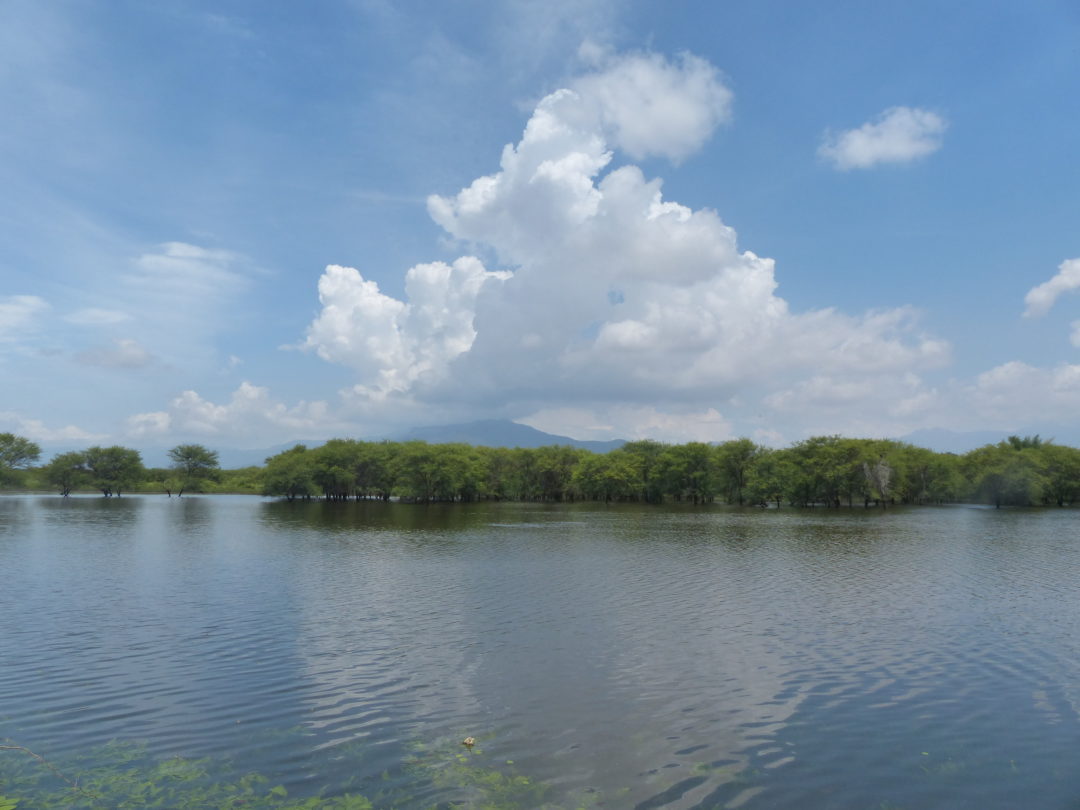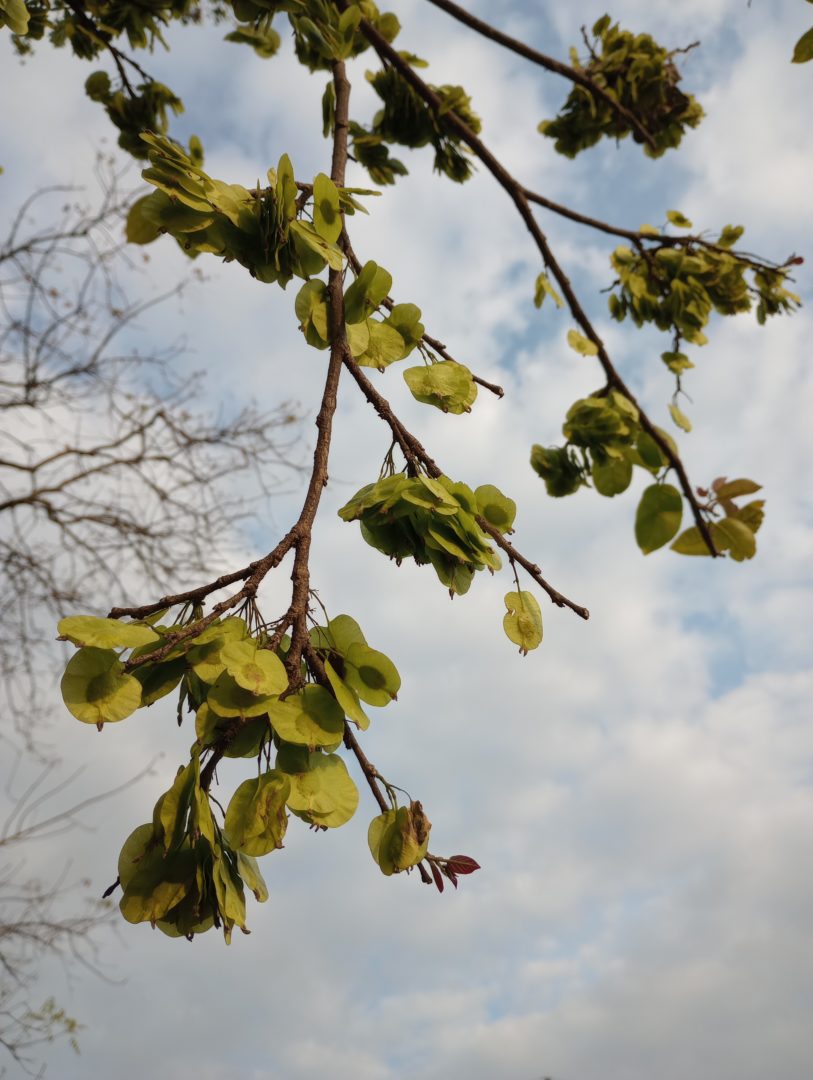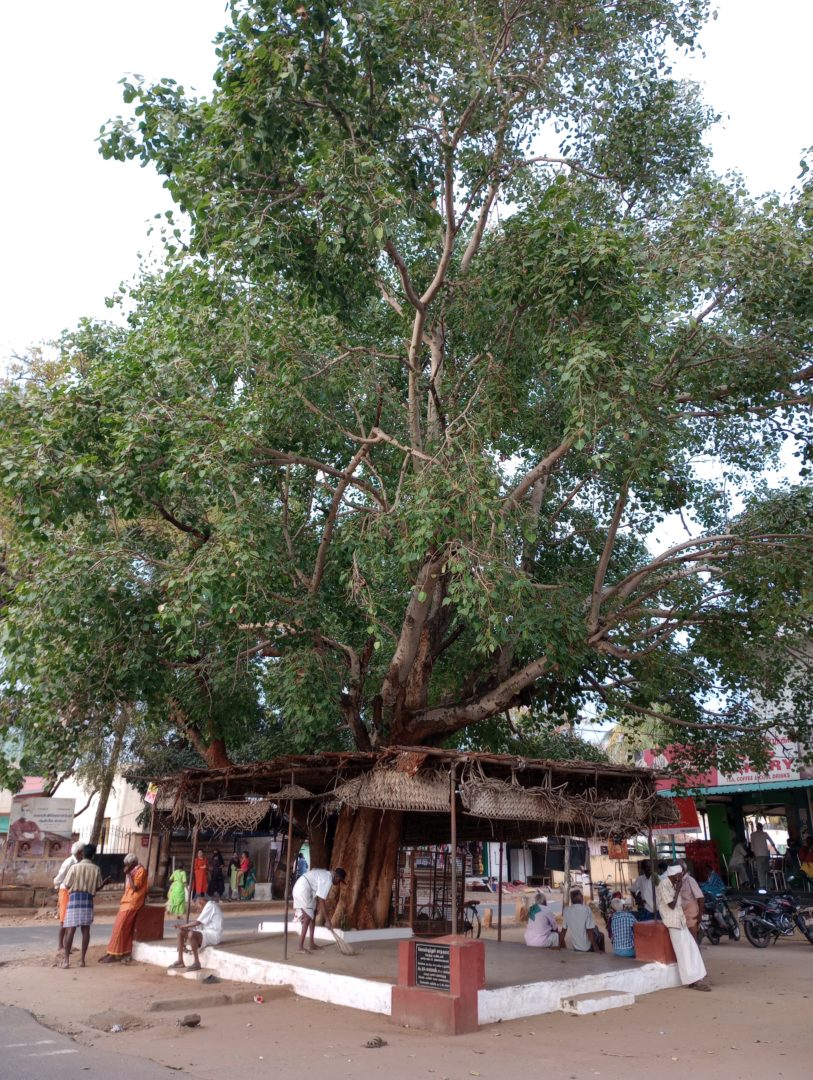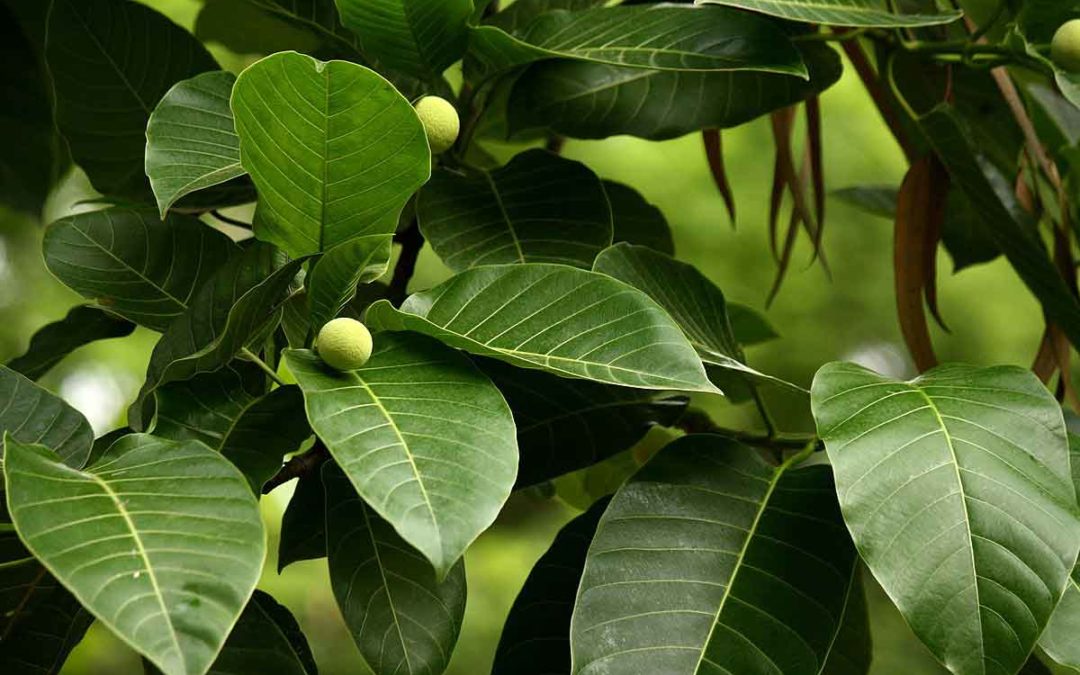There is a tall Acacia nilotica tree on an empty plot near our home. I have seen it grow from a small sapling, giving little notice to it then, always thinking the owners would pluck it out anytime as they begin to build a new house or apartment there. It has remained untouched and grown into a beautiful tree with dense foliage. I have grown fond of it now, admiring its yellow flowers and the way the branches dance in the wind. This tree, like all its cousins in the pea family, makes fruits that are referred to as ‘pods’. My father once observed that “Goats love Karuvellam pods” as we passed a herd, enjoying the pods along the roadside. Unlike my father, I have referred to this tree as ‘Acacia nilotica’ not ‘Karuvellam’ as it is called in my mother tongue Tamil. Not that I don’t know the Tamil name but I have just never used it to refer to the tree to anyone. Well, what’s in a name? We’ll come to that later.
On a recent assignment, I had to check and verify Tamil names for about 100 species of trees. I should be honest; my vernacular vocabulary of tree names was not as impressive as I thought it was. There were many trees I knew by their scientific name or common name but not in my mother tongue. I realised there were many trees I had seen or passed by but never managed to look them up. And of course, there were some trees whose names I knew in Tamil but not their scientific counterparts.

Acacia nilotica in a wetland in Coimbatore (Photo: Suhirtha Muhil M)
To begin with, finding regional names of trees is not easy! Tree guides and books simply cannot encompass the numerous languages and dialects present in the state let alone the country. Compartmentalising the names of a tree to just one or two names would be unfair to the numerous communities, cultures and tongues which have used those names for a long time. Some of these names would have been used with reverence, some with great fondness, and some for practical everyday affairs.
Let me share some of the tree names which I found interesting during the course of this assignment.
I am not a person from a coastal town; I live too far inland to know about a group of sea-water-loving trees called Mangroves. I learned about their pneumatophores in school, and later about their ecological importance and the need for their conservation. It never crossed my mind that these trees could have a Tamil name. As it goes ‘Kandal’ is the name given to Mangrove species in general. Avicennia officinalis is ‘Kandal/ Venkandal/Uppatam’; Ceriops tagal is called ‘Kandal/Ankantal’ and Rhizophora mucronata is also called ’Kandal’. The usages also vary along the coastline as we move from north- and central- to southern Tamil Nadu.
Cerebra odollum another saltwater and marshland tree is called ‘Othalangai’ both in Tamil and Malayalam and also as ‘Kaatu Arali’ in Tamil. The tree has highly toxic fruits, giving it the infamous name ‘suicide tree’. The close resemblance of these fruits to Mango has led to fatal accidents by consumption. The fruits are nowadays procured and exported to the West, where biopesticides are produced from them.
Terminalia arjuna is widely known as ‘Maruthu’ or ‘Vella maruthu’, and the name of the famous Maruthamalai comes from this tree. Another Terminalia species – Terminalia bellirica – is widely prevalent and called ‘Thaandri’ or ‘Thaani’ in Tamil. Apparently this is one of the main three components of an ayurvedic remedy called ‘Triphala’ and also has numerous medicinal properties.
‘Kadamban’ and its variants like ‘Kadamba-vana-Sundaram’ were names occasionally given to men a generation ago. Two years back when we were looking for a Tamil name for our son, I realised that ‘Kadambu’ is the name of a beautiful tree Neolamarckia cadamba and this name is also attributed to the deity Muruga which is believed to have lived in the forests full of Kadambu trees. Kadambu is mentioned in numerous places in the Sangam literature and other Tamil literary works. Apparently, the city of Madurai is said to have been a forest of Kadambu trees and was previously called ‘Kadambavanam’. According to an article by A.Sashi Kumar in The Hindu*, there are as many as four species referred to as Kadambu- Mitragyna parvifolia, Neolamarckia cadamba, Haldina cordifolia and Barringtonia acutangula of which the first three are found in Madurai. Dr. Stephen, Professor of Botany at The American College, Madurai suggests Mitragyna to be the original Kadamba as it is found in the nearby forests and is native to the region*.

Fruits of Holoptelea integrifolia (Photo by Suhirtha Muhil M)
Talking of towns getting their names from trees, a village close to the town of Pollachi is called ‘Valanthayamaram’, and lies on the Pollachi-Thrissur state highway. For many years I thought it to be just the name of the village for no other reason, but then I came to know that the village got its name from the Holoptelia integrifolia tree (‘Aaya maram’). In Tamil, ‘Valanthayamaram’ means- tall Aaya tree. Unfortunately, the tall Aaya tree after which the village was named, was cut down for expanding a road, much to the disappointment of locals. Looking now at the images of its dry fruits, I can recollect coming across this tree innumerable times in my life. But I never put a name to it, nor did I ever bother to ask its name. I now realise the importance of paying attention to understand and empathise with nature.
I believe that we all are born with the intuitiveness to observe our surroundings and to love and enjoy nature. As we grow older, sometimes this intuitiveness withers away due to the many pressures of life. Luckily for some, it remains in the form of fondness for nature. But where does this fondness arise from? Why do I like the Delonix regia near my home? Is it because I’ve seen its beautiful compound leaves sway in the wind over several years or is it because it has pretty red flowers? If one spends enough time observing a tree, would one feel more attached to nature? In the myriad distractions present today, will the ever-eye-grabbing screen spare us the time and the observant eye to look out the window?
Language in conservation

Social gathering under a Ficus religiosa tree (Photo by Suhirtha Muhil M)
Why is the name of a tree so important? When I said ‘Acacia nilotica’ and my father said ‘Karuvellam’, I felt there was a disconnect between what is scientifically and culturally known about local ecology. I can certainly say I adore the tree just as much as my father does and I would also believe that the experience I have with the tree is more important than the name I use. But there is something deep I am aware of missing when I refer to a tree by its scientific name – I miss a shared experience of several generations. Using names such as Maruthu, Othalangai, Kadambu, Vaagai, and Vengai might seem abstract – just as abstract as the use of scientific names with people unfamiliar with the Latin language – but it carries with it age-old use from the land. As anthropologist and ethnobotanist Wade Davis says ‘Every language is an old world forest of the mind and a watershed of thought, an entire ecosystem of spiritual possibilities’. As someone who loves sitting under an ‘Arasa maram’, I can say for sure that calling it a Ficus religiosa is just not as endearing as saying it in my own language.
*Shashi Kumar A, ‘Where once stood a forest of Kadamba trees…’, The Hindu, 7th December, 2018
About the author: Suhirtha works with SeasonWatch at the Nature Conservation Foundation. In her free time, she loves exploring the rural roads in her hometown, Coimbatore.





